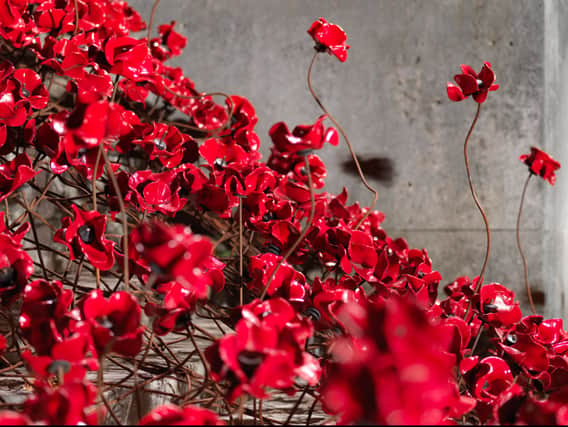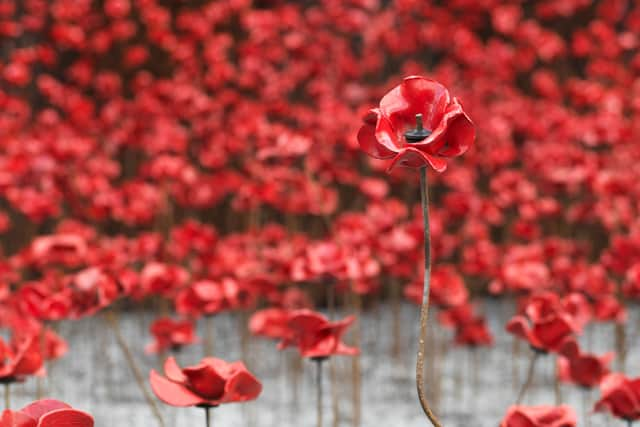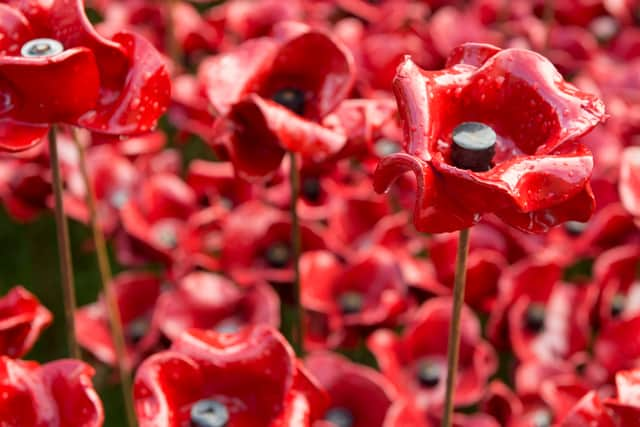Iconic poppy sculptures are coming back to Manchester for good at Imperial War Museum


The iconic poppy sculptures which have moved and stunned audiences since they were first unveiled are coming back to Manchester and going on permanent display.
The scarlet symbols of remembrance are being moved into a new home at the Imperial War Museum (IWM) North in Trafford Park, as part of a new artwork.
Advertisement
Hide AdAdvertisement
Hide AdThe ceramic flowers will be put back on public display from November.
What are the poppy flowers and what is the new artwork?
The ceramic poppies were originally created in 2014 by artist Paul Cummins for an installation designed by Tom Piper called Blood Swept Lands and Seas of Red.
An extraordinary display of 888,246 poppies, one for every British or Colonial life lost at the Front during the First World War, were displayed at the Tower of London.
The sight of the historic moat filled with a sea of red flowers, with poppies spilling out of a window and down the side of the landmark building, made a huge impression on the public.


Advertisement
Hide AdAdvertisement
Hide AdAfter that Poppies: Wave and Weeping Window went on tour around the UK during the centenary commemorations of World War One, including a visit to the IWM in Manchester.
Now 12,960 of the handcrafted ceramic flowers have been remodelled into a new sculptural display and will be housed inside the Manchester museum’s Air Shard.
They will cascade down and pool within the space.
Why are poppies a symbol of remembrance?
Poppies were a familiar sight on the Western Front during World War One as they grew well in the devastated soil.
The link between the flowers and remembrance became permanent when in 1915 John McCrae wrote his famous poem which linked the poppies with those killed in the brutal trench warfare In Flanders Fields.
Advertisement
Hide AdAdvertisement
Hide AdIt concludes with the lines: “We shall not sleep, though poppies grow / In Flanders fields”.
When can I see the poppies?
The permanent display for the poppies in Manchester will be opened on Wednesday 10 November, the week before Remembrance Day.
To mark the occasion the museum is putting on a series of special events around the unveiling.


Historians and activists will take part in an annual online panel debate about remembrance and war on Tuesday 9 November.
Advertisement
Hide AdAdvertisement
Hide AdOn Sunday 14 November there will be a two-minute silence at 11am before groups of young people put on a special performance exploring what remembrance means to them.
The Manchester performance will include song, movement and a video installation.
What has the museum said about the poppies arriving?
Laura Clouting, senior curator of First World War and early 20th Century at IWM, said: “It feels really fitting to have the poppies return and make their home at IWM North.
“IWM was founded over a century ago amidst the First World War to ensure that we never forget the human cost of war.
“This sculpture, both an artwork and a piece of social history, will provide visitors with the opportunity to consider these consequences of war afresh.”
Comment Guidelines
National World encourages reader discussion on our stories. User feedback, insights and back-and-forth exchanges add a rich layer of context to reporting. Please review our Community Guidelines before commenting.
